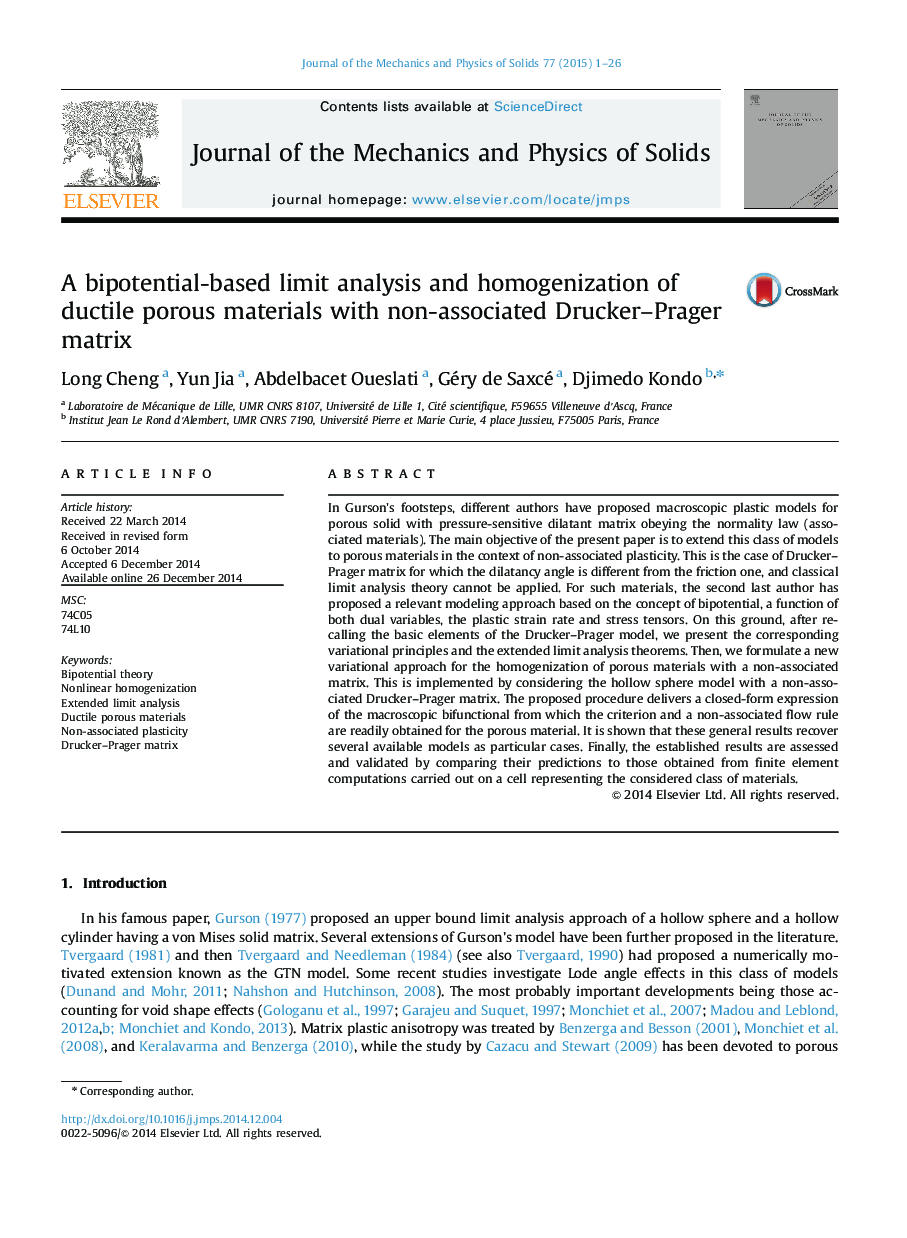| کد مقاله | کد نشریه | سال انتشار | مقاله انگلیسی | نسخه تمام متن |
|---|---|---|---|---|
| 796545 | 1467066 | 2015 | 26 صفحه PDF | دانلود رایگان |

• We propose a new variational framework for ductile porous materials with a non-associated matrix.
• The resulting extended Limit Analysis approach has been implemented for a hollowsphere.
• This delivers closed-form expressions for the macroscopic yield criterion and the non-associated flow rule.
• The model predictions are assessed and validated by means of Finite Element computations.
In Gurson's footsteps, different authors have proposed macroscopic plastic models for porous solid with pressure-sensitive dilatant matrix obeying the normality law (associated materials). The main objective of the present paper is to extend this class of models to porous materials in the context of non-associated plasticity. This is the case of Drucker–Prager matrix for which the dilatancy angle is different from the friction one, and classical limit analysis theory cannot be applied. For such materials, the second last author has proposed a relevant modeling approach based on the concept of bipotential, a function of both dual variables, the plastic strain rate and stress tensors. On this ground, after recalling the basic elements of the Drucker–Prager model, we present the corresponding variational principles and the extended limit analysis theorems. Then, we formulate a new variational approach for the homogenization of porous materials with a non-associated matrix. This is implemented by considering the hollow sphere model with a non-associated Drucker–Prager matrix. The proposed procedure delivers a closed-form expression of the macroscopic bifunctional from which the criterion and a non-associated flow rule are readily obtained for the porous material. It is shown that these general results recover several available models as particular cases. Finally, the established results are assessed and validated by comparing their predictions to those obtained from finite element computations carried out on a cell representing the considered class of materials.
Journal: Journal of the Mechanics and Physics of Solids - Volume 77, April 2015, Pages 1–26